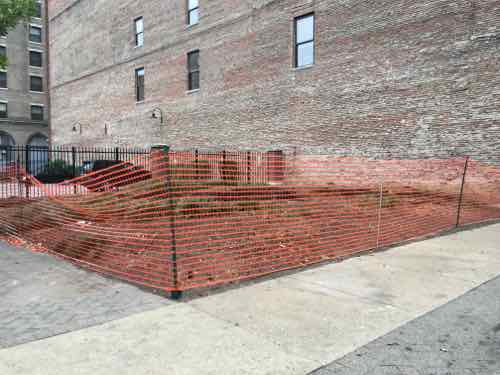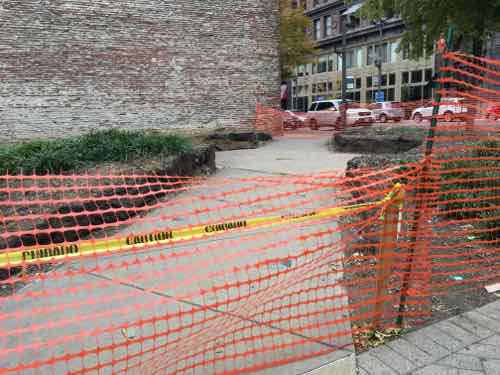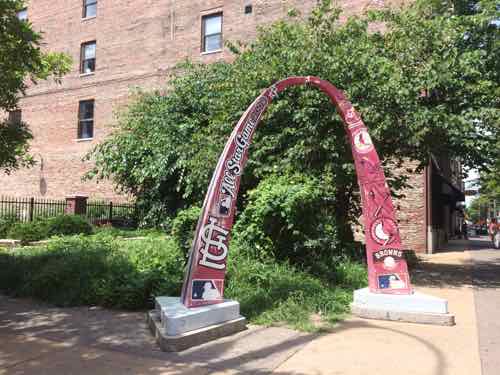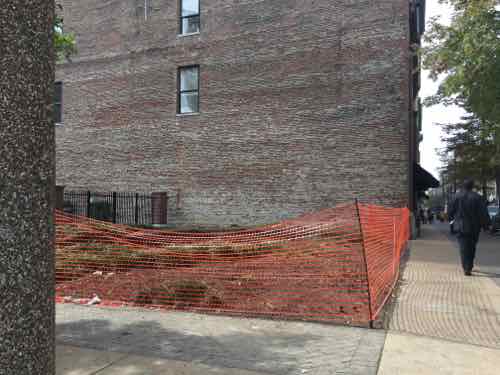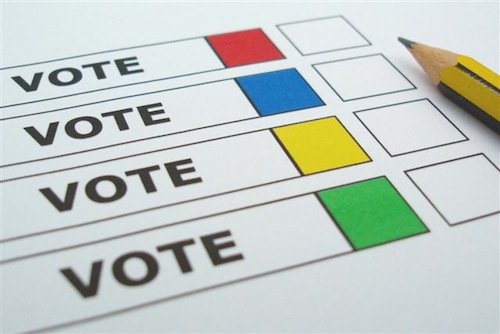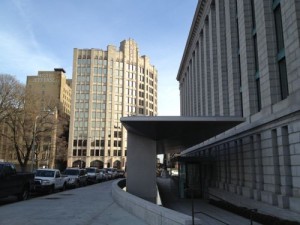An event celebrating Christopher Columbus was held in The Hill neighborhood on Sunday. On Monday it was pretty much business as usual, although Missouri state offices were closed and mail wasn’t delivered. People went to work, kids went to school. In St. Louis County government “only the Circuit Clerk’s Office, Court En Banc and Probate Court” were closed, see holiday calendar.
Generally, the closer you are to a large Italian-American population, the more likely people will be out celebrating. Italians will be proudly marching in San Francisco, for instance. But Berkeley is giving its employees the day off, and has called this holiday Indigenous Peoples’ Day for 20 years. They’re holding a powwow. Hawaii calls the day “Discoverers’ Day” for its Polynesian community, but state offices there are open.
Don’t think this Columbus Day defiance is some crunchy liberal thing, either. South Dakota calls October 14 “Native Americans Day” and state offices will be closed. Oklahoma state offices will be open, but the day is celebrated by each tribe. Most of the northeast corner of the state will celebrate Monday as Cherokee Day. But there are eight other tribes nearby, and each will attach their name to the celebration. (The Street)
But he discovered America, right? Wrong!
His four trips from Spain across the Atlantic — in 1492, 1493, 1498 and 1502 — did, however, change human history forever, ushering in what is known as the Columbian Exchange — the historic exchange of plants, animals, disease, culture, technology and people between the Old and New Worlds. The Old World, for example, got chocolate (and many other things) and the New World got wheat, along with bubonic plague, chicken pox, cholera, malaria, measles, typhoid, etc., which decimated the populations of indigenous peoples Columbus found living on the islands he “discovered.”
As for Columbus himself, he mapped the coasts of Central and South America but never set foot on North America, and died thinking he had discovered Asia. He ruled the Caribbean islands as viceroy and governor so brutally that, according to US-History.com: “Even his most ardent admirers acknowledge that Columbus was self-centered, ruthless, avaricious, and a racist.” (Washington Post)
Never set foot in North America? Yet it is a national holiday?
In 1937, President Franklin D. Roosevelt proclaimed Columbus Day a national holiday, largely as a result of intense lobbying by the Knights of Columbus, an influential Catholic fraternal benefits organization. Originally observed every October 12, it was fixed to the second Monday in October in 1971. (History.com)
Here’s some good advice for parents…and everyone else.
If your child comes home in the leadup to Columbus Day, like mine did, full of praise for the explorer’s bravery and vision, that’s a fine place to start, even if he didn’t really “discover” the Americas or figure out that the Earth was round. He was, indeed, brave.
But then explain that brave people can do bad things, and worse things can happen without any planning. That’s one of the lessons of history. (CNN: What to tell your kid about Christopher Columbus)
The Oatmeal does a good job explaining Columbus’ legacy.
In the Sunday Poll most agreed the 2nd Monday in October should remain a federal holiday, but readers were split on the question of the name. With one “other” answer suggesting a name change that means those who say keep the name tied with those who want to change it.
Q: Columbus Day should be…
- Kept as is…a federal holiday honoring Christopher Columbus 16 [37.21%]
- Kept as a federal holiday, but the name changed to Indigenous Persons Day 15 [34.88%]
- Dropped as a federal holiday 9 [20.93%]
- Other: 2 [4.65%]
- Make it a general holiday and let everyone take the day off
- Kept as holiday, but name changed
- Unsure/No Opinion 1 [2.33%]
I personally think we should change the name to Indigenous Person’s Day, or something along those lines. The indigenous people of the Americas suffered greatly from various new arrivals — Columbus and those who followed him. It’s past time for us to accept our own tragic history.
As for everyone getting a day off — that doesn’t apply to service workers. Are we willing to close all stores, gas stations, hotels, hospitals, transit agencies, etc. for a day?
— Steve Patterson
